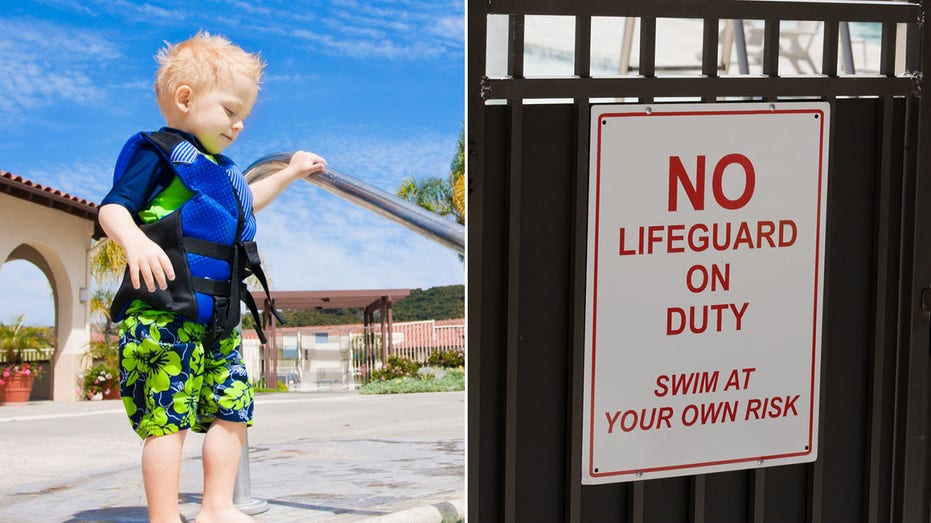The opening of swimming pools is synonymous with the start of summer — and it’s also the perfect time for a refresher on water safety.
Drowning is the most common cause of death for children ages one to four in the U.S., and is the second leading cause for kids between age five and 14, according to the Centers for Disease Control and Prevention (CDC).
Dr. Corinne Bria, pediatric emergency medicine physician at Nemours Children’s Hospital in Orlando, Florida, said the single most important tool to prevent drowning in children is knowledge.
“As a pediatrician, it is my responsibility to educate parents and caregivers about how to prevent drownings,” she told Fox News Digital.
“Drowning can happen to anyone. No one is immune to this devastation, and it’s important to know and take active steps to ensure water safety.”
Here’s what Bria wants parents and caregivers to know about keeping kids safe in pools and other bodies of water.
When it comes to water safety, pediatricians frequently talk about “direct supervision” or “touch supervision,” Bria said.
These are both important strategies to prevent drowning, which is a silent process, she added.
CALIFORNIA FIRST RESPONDER SAVES 1-YEAR-OLD SON FROM DROWNING IN POOL: VIDEO
“Touch supervision means an adult is physically in the water, holding and playing with the children,” she said.
“Direct supervision means there is a designated adult, a water watcher, who is monitoring the children in and around the water,” Bria went on. “The water watcher sits by the pool or walks around the pool, continuously watching the children in and around the water.”
Children should always wear life jackets when around a body of water, according to the American Academy of Pediatrics (AAP).
The AAP recommends using U.S. Coast Guard-approved life jackets or life preservers based on the weight of the child.
“It’s important to test the fit of the life vest on the child prior to use to ensure the vest is snug around the waist,” Bria said. “This prevents [children] from slipping out of an ill-sized vest while in the water.”
Infants and small children can drown in as little as two inches of water, including in bathtubs, toilets and 5-gallon buckets, Bria pointed out.
RINGWORM RESISTANT TO COMMON ANTIFUNGALS FOR FIRST TIME IN US: WHAT TO KNOW ABOUT THE SKIN INFECTION
“It is important to supervise babies, toddlers and small children around all forms of water, both inside and outside the home,” she said.
A majority (58%) of the drownings among kids age four and younger happened at home in a pool or spa between 2013 and 2015, according to the AAP.
Enclosing all pools with a fence is the single most effective way to prevent drownings, the AAP notes on its website.
The fence should have four sides, be at least four feet high, be climb-proof and have a self-closing, self-latching gate that children can’t reach.
Participation in formal swimming lessons was linked to an 88% decrease in drowning risks among children between 1 and 4 years old, studies have shown.
Many children can begin swim lessons at age one, per the AAP. For kids age four and up, the lessons are a “must.”
“Remember, drowning is silent and very different from what we see in movies or on TV,” Bria said.
“If you find a person submerged in the water, get the person out of the water, call 911 and begin CPR.”
CLICK HERE TO SIGN UP FOR OUR HEALTH NEWSLETTER
“If you have questions about water safety, ask your pediatrician,” she continued. “This is an important conversation to have.”
Drowning can happen to anyone, Bria added.
“Be intentional and deliberate in recognizing and mitigating the risks to prevent children from drowning,” she said.
To read more pieces in Fox News Digital’s “Be Well” series, click here.
Article Source: Health From Fox News Read More




